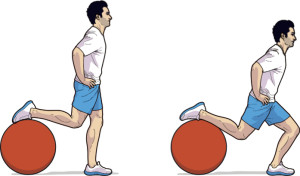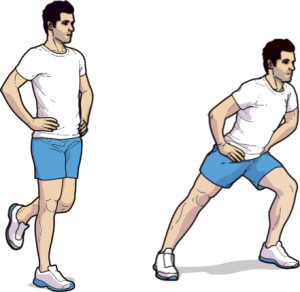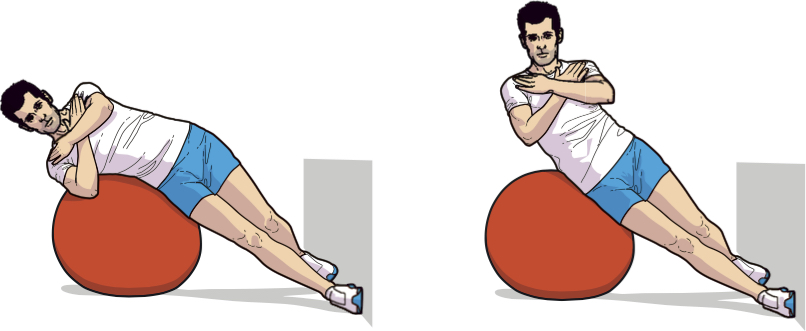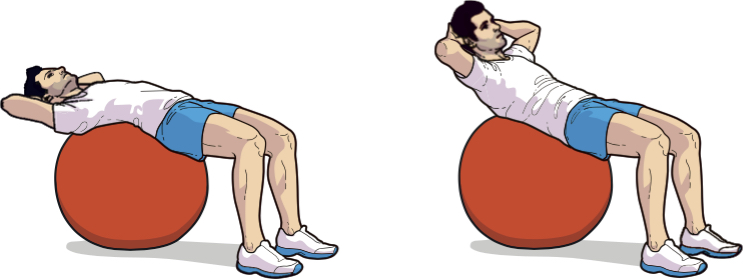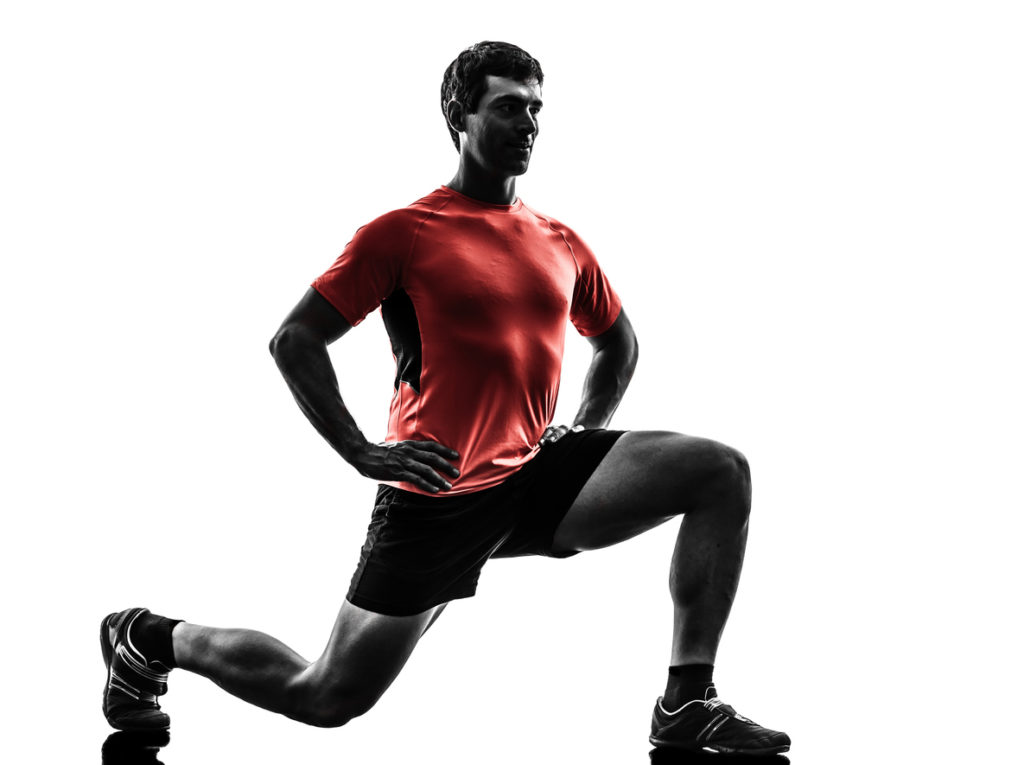
The stronger you are, the more likely your body will adjust to your increasing mileage without succumbing to injury. These moves from Anne-Marie Lategan will help:
Sets, reps and frequency
Perform three sets of 13 repetitions three times per week. This will only take approximately 15minutes but can significantly improve your endurance and reduce fatigue especially if you’ve missed a couple of sessions.
1. Back-crossing lunge
Body benefits: Thighs, glutes, core muscles
Why do it?
Increasing your leg strength will reduce fatigue in your legs during a half marathon.
Technique:
- Stand with your feet together
- Step backwards with your left leg and cross it behind your right leg
- Bend both knees to perform a lunge
- Step back to the starting position and repeat on the other side
- Alternate between left and right
- The lower you get your back knee to the floor the harder your muscles work but make sure your knees don’t hurt
Safety tip:
If you have knee problems work within a pain free range of motion.
2. Lunge with back foot on ball
Body benefits: Thighs, glutes, core muscles
Why do it?
By lifting your back foot up you increase the intensity of the exercise.
Technique:
- Stand in front of an exercise ball and place your right leg behind you onto it
- Keep your torso upright and your core muscles contracted
- Bend your left leg to perform a lunge
- The lower your right (back) knee gets to the floor the harder your muscles work
- Complete one set on the left before changing over to the right
Safety tip:
Hold on to a secure object if you struggle with your balance.
3. Side lunge to balance
Body benefits: Inner and outer thighs, glutes, core
Why do it?
Strong supporting muscles will support your thighs and slow the rate of fatigue.
Technique:
- Stand on your left leg and keep your right leg off the floor
- Step sideways with your right leg
- Bend your right knee and keep your left leg straight
- Push off with your right leg to the single leg balancing position
Safety tip:
Focus on one point in front of you to aid your balance.
4. Stability ball leg curl
Body benefits: Hamstrings
Why do it?
Strong hamstrings will help you with uphill running.
Technique:
- Lie on your back on the floor and place your feet on a stability ball
- Lift your bottom of the floor to form a straight line between your shoulders, hips and feet
- Keep your stomach muscles tight
- Bend your knees and roll the ball towards your bottom
- Straighten your legs back to the starting position
Safety tip:
Keep your arms next to your body on the floor for balance.
5. Stability ball oblique side lift
Body benefits: Side muscles (obliques)
Why do it?
Strong side muscles can help to reduce tiredness and increase your speed.
Technique:
- Sit with your right hip on a stability ball
- Place your right leg forward (bottom leg) and your left leg backwards (top leg)
- Keep your feet against a secure object
- Cross your arms on your chest
- Lower your body sideways over the ball
- Lift back up to the starting position
- Complete one set on the right before changing over to the left
Safety tip:
The wider you keep your legs the more balance you’ll have.
6. Stability ball crunches
Body benefits: Abdominals, core muscles
Why do it?
Strong stomach muscles are very important for a good running technique and speed.
Technique:
- Lie with your back supported on a stability ball
- Place your hands behind your head and look up to the ceiling
- Crunch your head and shoulders about two inches up
- Slowly lower with control
Safety tip:
Don’t bounce on the ball. Use slow controlled movements.


